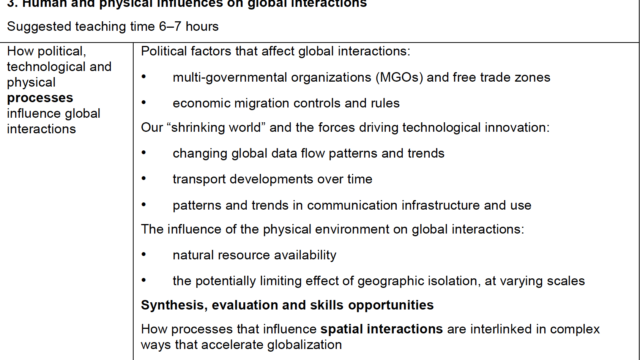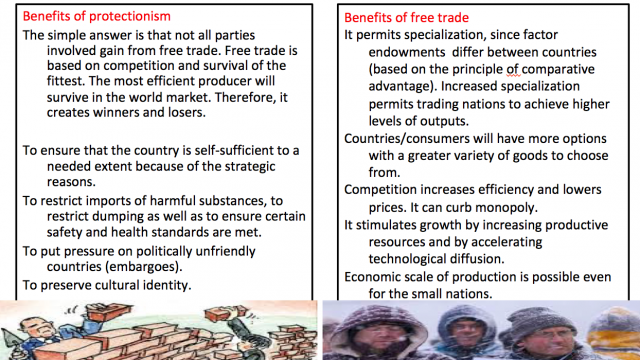Protectionism Vs Free trade:
What is Protectionism?
Forms of protectionism
Protectionism can take various forms. The most common forms are as follows-
- Tariffs and quotas (quantitative restriction on the volume of import)
- Subsidies- lower production cost thus artificially increase competitiveness of the receiver.
- Regulatory barriers (product standard, sanitary or pollution standard)
- Antidumping measures and duties
- Exchange control (exchange rate denotes the price of a currency expressed in terms of another)
- Import licenses
What does free trade mean?
- Free trades means removing barriers on trade and encouraging countries to be specialized in producing products which they can produce much efficiently. This is known as comparative Advantage.
- The removal of tariffs
- The establishment of trade rule, e.g. Anti-dumping procedure
- The deregulation of state services in the form of subsidy
- The treatment of foreign investment as national, thus removing local quotas
- The maintenance of intellectual property right, ensuring copyright regulations are strictly enforced.
Definitions:
Tariff: A tax on import as a result of which the domestic price of the product rises. It is assumed that if the price of the imported products rises then the level of domestic production of that commodity will increase. Tariff also generates revenue for a government.
Trading bloc: is an arrangement among a group of nations to allow free trade between the member countries without imposing tariffs on the commodity traded and ensuring a free access to each other´s market.
Free Trade Area Vs Free Trade Zones
Free trade area is generally a group of countries that have agreed to remove trade restrictions between themselves but having individual trade policies with the non-members. For example, the EU started as a free trade area, later evolved to a economic and political union. On the other hand, free trade zones (previously known as export processing zones EPZs) are specially designated area within the country offering business friendly environment where manufacturing, processing, export and reexport take place without much custom regulations or taxes. FTZs are created by the government to boost trade, generate employment, attract FDI and to increase country’s export and foreign exchange. FTZs are usually located around major seaports or centering international airports and other highly accessible areas. Most FTZs in 1980s were located in the developing countries. However, at present there are more than 1100 FTZs in 100 countries.
Special Economic Zones (SEZs) : SEZs may vary in functions and scope. They are usually amalgamation of free trade zones (FTZs) to harness maximum FDI by creating an economy of agglomeration. According to World Bank, SEZs are designated geographical spaces where special policies and measures support specific economic functions such as free-trade areas, industry parks, technical innovation parks and bonded zones that facilitate experimentation and innovation over a wide range of industries. For example, Shanghai free trade zone and South China sea coastal SEZs, which were crucial to Chinese economic growth in 1990s where many of the world’s largest TNCs established their off-shore units by outsourcing a significant part of their company function to this low-tax territories with the added advantage of state of the art infrastructure and cheap labour.
Reading:
World Bank document on China’s SEZs
Economic Migration Controls and Rules : Anti or Pro Globalization?
Immigration is an important political issue in many counties. Antagonistic attitude towards immigration is getting strongest ground (i) in countries with high rates of immigration such as Australia, Lebanon OR (ii) countries with the strong public xenophobia, the fear of loosing their cultural identity such as Germany, United Kingdom etc. There is acute fear of perceived threats such as loosing jobs casing unemployment of the native population, residential price hike due to higher demands, misuse of social security money and raising taxes, increasing crime rate, foreign diseases, terrorism and dilution of mainstream culture. However, researches indicate that these perceived fears have no empirical grounding as in immigrants provide labour and generate government revenues and generally produce more resources than they consume.
Immigrants in proportion to the native population
United Arab Emirates, Qatar and Kuwait had the highest number of immigrants where immigrants as a proportion to the native population constitute more than 70% in 2018. Japan and Russia have recorded the lowest proportion of immigrants in comparison to the native population while Germany and Canada having the highest number of immigrants as a proportion to the native population among the G8 nations.
Immigrants in absolute number
According to the UN report, 20% of the world’s immigrants live in the USA. The USA has the highest total number of immigrants, followed by Germany and Russia. India was the largest country of origin of international migrants (17 million) in 2017, followed by Mexico (13 million). Female migrants outnumber male migrants in Europe.
Not to confused: Refugees are not economic migrants
According to the UN report 2017, the total number of refugees and asylum seekers in the world was 25.9 million. with 3.1 million refugees and asylum seekers, Turkey hosted the largest refugee population worldwide, followed by Jordan (2.9 million), and Lebanon.
Reading:
Countries hosting the most immigrants


